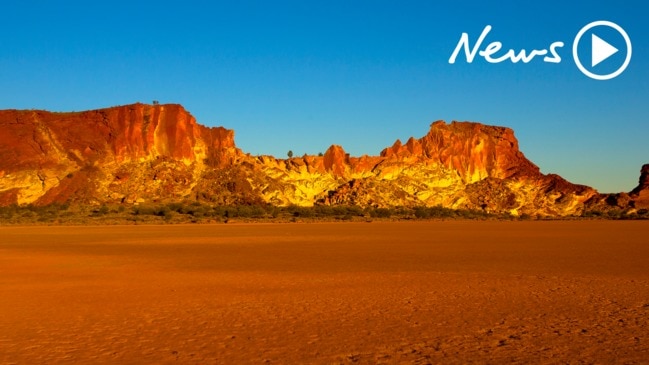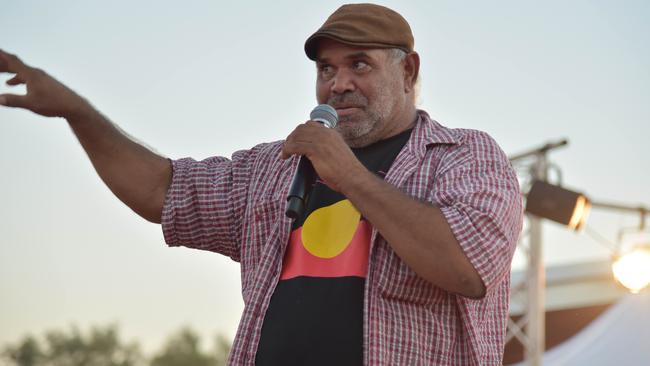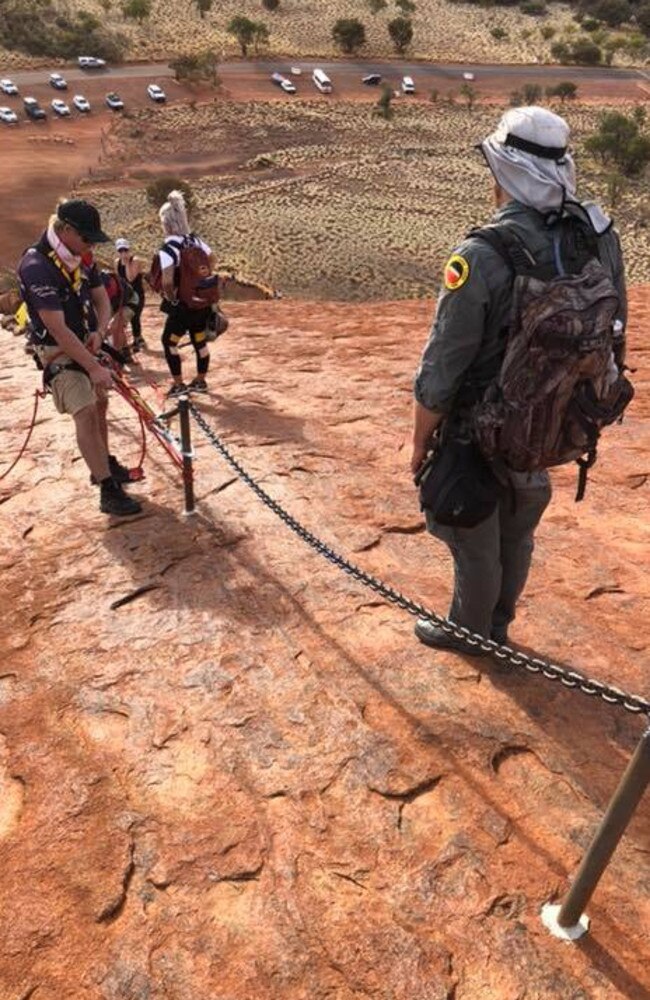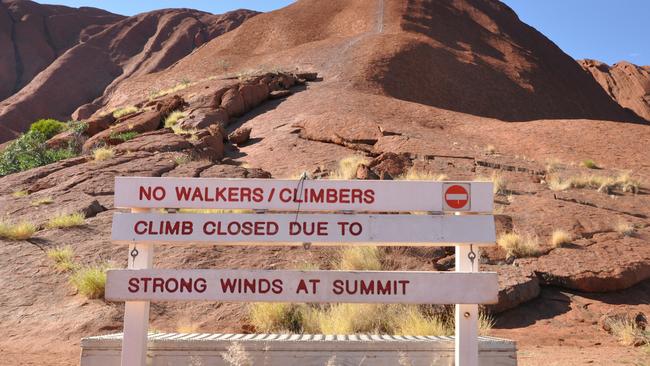Can I climb Uluru? When does it close to tourists?
Tourists are rushing to the Red Centre to climb Uluru before it is banned, but the activity has long been considered disrespectful by traditional land owners.

Travel News
Don't miss out on the headlines from Travel News. Followed categories will be added to My News.
Tourists heading to the Northern Territory’s Red Centre will soon have to admire Uluru from afar.
The Uluru-Kata Tjuta National Park Board announced in 2017 that tourists would be banned from climbing the rock on October 26, 2019.
The announcement came after it was found that less than 20 per cent of people visiting the park were making the climb, down from more than 70 per cent in previous decades.
About 140 people were climbing the rock each day when the decision was made in 2017. But that number has skyrocketed to between 300 and 500 people as the climb ban approaches.
Uluru, or Ayers Rock, is sacred to indigenous Australians and thought to have started forming about 550 million years ago. It is close to the centre of Australia, in the southern part of the Northern Territory, and best accessed from Alice Springs.

WHY CLIMBING WAS BANNED
The climb was always discouraged by the park’s traditional owners, the Anangu people, as it was deemed disrespectful due to the sacred nature of the area.
A 12-person board voted unanimously to close the rock on a very symbolic date — the 34-year anniversary of the day the Uluru land title was handed back to the Anangu people.
Chairman and senior traditional owner Sammy Wilson made an impassioned speech prior to the vote, explaining the sacred nature of the site.
“It is an extremely important place, not a playground or theme park like Disneyland,” he said. “If I travel to another country and there is a sacred site, an area of restricted access, I don’t enter or climb it, I respect it. It is the same here for Anangu. We welcome tourists here. We are not stopping tourism, just this activity.”
Mr Wilson ended his address with a call for unity. “The land has law and culture. We welcome tourists here. Closing the climb is not something to feel upset about but a cause for celebration. Let’s come together; let’s close it together.”
Despite closing the climb, there is still plenty for tourists to enjoy in the region.
“Activities at the Red Centre include camel rides, the Uluru Segway tour which takes visitors around the base of Uluru, a number of walking tracks including the Valley of the Winds at Kata Tjuta (the Olgas), Mala walk, outback cycling rides, Uluru motorcycle rides and even skydiving,” a spokesperson for Tourism NT told news.com.au. “Maruku Arts offers art, tours and workshops, and of course there are many sunrise/ sunset tours on offer.”
RELATED: Australians should be mortified by ‘Uluru twerking’ clip
RELATED: The souvenir from Uluru you should never take

A HISTORY OF THE CLIMB
Climbing the world-famous rock has long been considered disrespectful to the traditional owners and while it was technically legal, the Anangu people would politely ask people not to climb as it follows a sacred ceremonial path used in indigenous ceremony.
The climb has also damaged the rock itself, with a huge white scar from tourists walking the same path being visible from a distance.
A sign also sits at the base of the climb, imploring visitors to reconsider their need to scale the rock.
“We, the traditional Anangu owners have this to say,” the sign reads. “The climb is not prohibited but we ask you to respect our law and culture by not climbing Uluru. We have a responsibility to teach and safeguard visitors to our land. The climb can be dangerous. Too many people have died while attempting to climb Uluru,” it reads.
At least 35 people have died while attempting to climb Uluru and many others have been injured.
From 2011 to 2015, the climb was closed 77 per cent of the time due to dangerous weather conditions or cultural reasons.

THE CLIMB CAN BE DANGEROUS
The rock climb is strenuous. Measuring 348m high (that’s a 95-storey building), the climbing path stretches for 1.6km and can be treacherous, especially in certain weather conditions.
At least 35 people have died climbing Uluru, most from heart attacks.
The rock is incredibly dangerous to climb after rainfall, as the surface is extremely slippery, and often strong winds or high temperatures force park rangers to close the site for safety reasons.
The most recent tourist to be rescued suffered a heart attack during the climb, about three-quarters of the way up the trail. Members of the public assisted park rangers, NT Police and NT Ambulance staff in the major rescue operation. The man — in his mid-sixties — had to be flown to hospital.
The Anangu people also feel deeply responsible for the frequent injuries and deaths that occur there. A statement from the land’s traditional owners said: “We feel great sadness when a person dies or is hurt on our land. We worry about you and we worry about your family. Our traditional law teaches us the proper way to behave.”

Originally published as Can I climb Uluru? When does it close to tourists?


